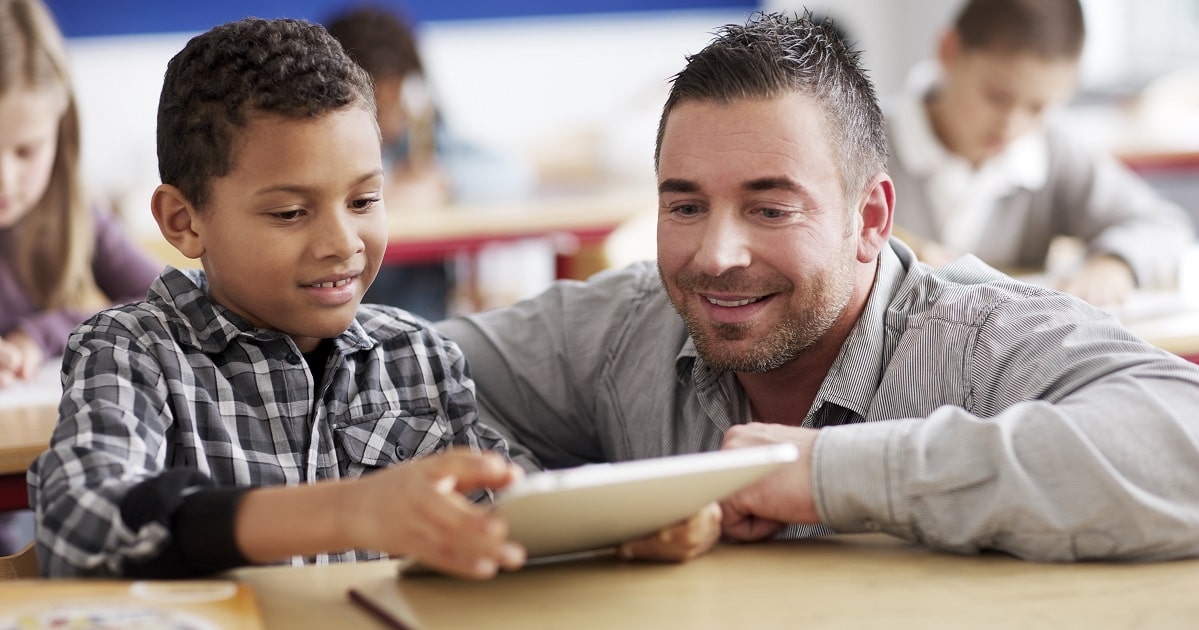
Students enjoy a positive classroom.It’s no secret to teachers that stress and discord can compromise their ability to sustain healthy relationships with students and manage classrooms.

This can lead to a “burnout cascade” that promotes hostility and alienates students, according to Patricia A. Jennings and Mark T. Greenberg, whose oft-referenced 2009 article “The Prosocial Classroom: Teacher Social and Emotional Competence in Relation to Student and Classroom Outcomes” highlights the need for teachers to develop social and emotional skills that nurture effective classrooms, avoid burnout and improve student achievement.
Positive Learning Environments
The researchers found that social trust within a school community is a key resource for improving schools, and that students learn better when they:
- are happy.
- feel respected and cared for.
- can bond with the school.
- can develop high levels of self-efficacy–the belief that they can accomplish their goals.
Education bloggers have taken up the challenge of building positive classroom environments. One of them is Jose Vilson, who contributes often to Edutopia.com and maintains his own blog, The Jose Vilson.
Last September, Vilson posted “Building a Positive, Trusting Classroom Environment,” where he wrote about how he improves his relationships with students.
“Most teachers I know want to have a positive relationship with their students, but often don’t know how, or believe that silence and obedience mean they’re learning,” he wrote. “Building a relationship means that you’ve opened a door for them to learn, making them receptive to what you have to say and giving them confidence to contribute as well.”
Tips to Keep Things Positive
Vilson offers some salient tips for teachers to keep things positive between the bells:
- Avoid saying “wrong.” “The word ‘wrong’ in a classroom is similar to the phrase ‘You can’t do that’ in improv,” Vilson wrote. “It’s a non-starter and often inhibits further participation.”
- Take arguments outside. “Even in extreme situations, having a tit-for-tat with a student for longer than a few seconds looks worse for us as adults than it does for the student,” Vilson advised.
- Use on-the-spot affirmation. “No teacher wants students who constantly need affirmation, because then they may never build self-sufficiency,” Vilson wrote. “Yet every so often, when a child has had a bad stretch, or has dug themselves deep into a hole of frustration, a quick ‘Yes, that’s exactly right,’ or a pat on the back will return the student to the right frame of mind.”
Sustaining Positivity
Another active blogger, Addie Albino, serves up these ideas to sustain positivity in the classroom:
- Know and notice all of your students. “I make it a point to acknowledge every student who walks through my door, knowing that this might be the only time during their day when someone ‘sees’ them,” Albino writes. “I also shake their hands and provide them with a warm welcome and a smile as we begin the day. Even such small gestures can make an enormous impact.”
- Create care packages. “I distribute a brown paper lunch bag to each student; they write their names on the bags, pass them around and drop notes inside that say something nice about that person,” Albino says. “Former students tell me that they still have those slips of paper, and that it changed the way in which they viewed their classmates.”
- Evaluate your own behavior. Albino advises asking yourself questions periodically to self-examine relationships with your peers and students. For example:
- “If everybody where I work was just like me, what would this place be like?”
- “If as many people helped me today as I helped others, how much help would I get?”
- “If today was videotaped for my peers, what would be their criticisms? What would be their accolades?”
Final Thoughts on Positive Classrooms
Other bloggers and websites list a range of techniques to build and manage a positive classroom. Here are some suggestions:
- Show your students you want to be there every day.
- Welcome your students and tell them how glad you are that they’re there.
- Call each student by name, and as Albino says, shake their hands to acknowledge them.
- Accept your students as they are. No matter how they dress, how they wear their hair, make them feel accepted and normal.
- Smile often and show interest in students’ personal lives.
- Establish rules and expectations on the first day of class, and stick to them.
- Refrain from displays of anger or hostility, and don’t punish your students. If students see you’re a “cool head,” they’ll be less inclined to “press your buttons.”
- Seek feedback from students on learning materials, class discussion and homework. They want to feel included. Be creative with your student seating arrangements and encourage a participative plan, with everyone “up front” and contributing, not lost in a corner.
Categorized as: Tips for Teachers and Classroom Resources
